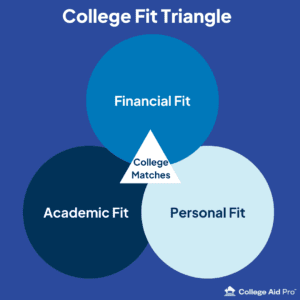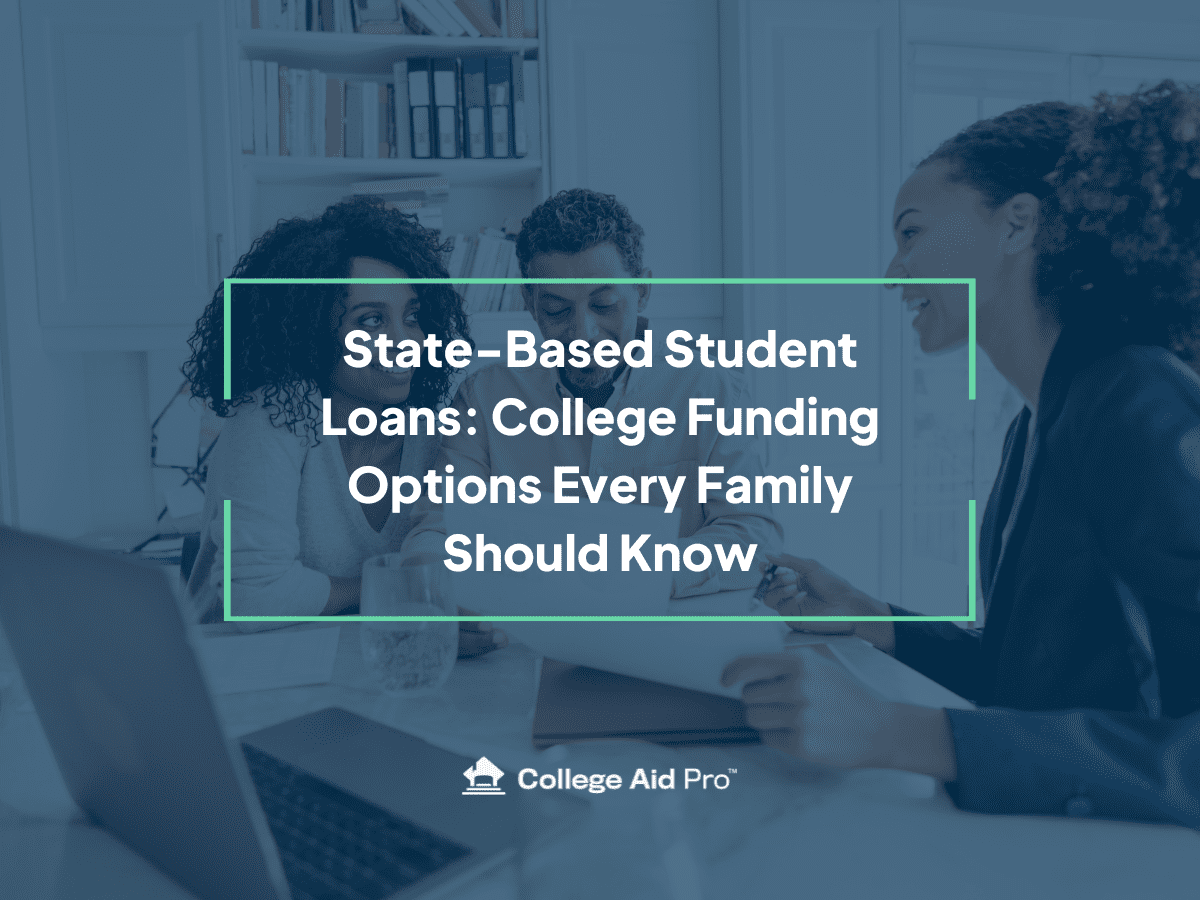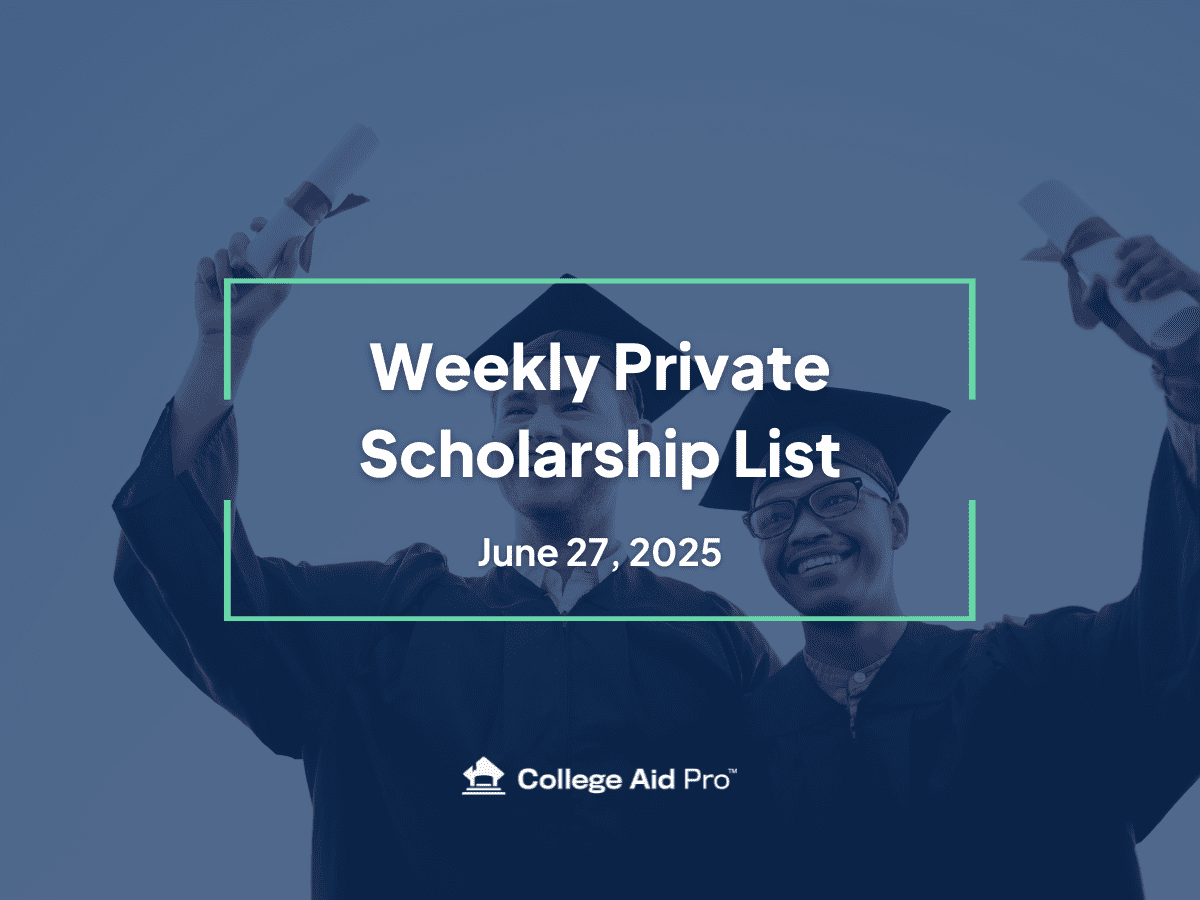Find Your College Match
Searching for the right college match with your high schooler can be an exciting but daunting journey. It’s essentially a process of evaluating the best college “fit”. Let’s explore the three key aspects of college fit that can make this process smoother.

Financial Fit
Financial Fit is all about ensuring that a college aligns with your family’s financial situation. Let’s be honest, the ultimate goal is to pay nothing for college, but 9 times out of 10, that’s unrealistic. The next best option is to find the colleges that your family can afford with little to no debt.
The good news is that the sticker price you see on the college’s website doesn’t necessarily dictate what you’ll pay. How do you evaluate schools to see if they are a financial fit?
Here are six ways to assess a college’s financial fit:
- Use the Net Price Calculator on the college’s website to estimate what kind of aid you will receive. Or leverage MyCAP for a fast, accurate project of your SAI.
- Look at the college’s merit scholarships. Does your student qualify for any automatic merit scholarships? Is your student eligible to apply for any competitive merit scholarships?
- Evaluate costs related to the school other than tuition, fees, room and board.
- What will it cost your student to travel back and forth between school and home when needed?
- If your student is bringing a car to campus, what are the parking fees?
- Is the college known to be generous with need-based aid (if applicable for your family)? You can determine this by leveraging your free MyCAP profile. Research the following statistics for the school to get a better idea of how generous they may be:
- Number of Financial Aid Applicants
- Number of these found to have financial need
- Number who Received Financial Aid
- Number who had Need Fully Met
- Average Percent of Need Met
- Average Financial Aid Award
- Average Amount of Need-Based Gift Aid
- Average Amount of Need-Based Self-Help
- Is the college known to be generous with merit-based aid? Again, you can determine this with your free MyCAP profile. Look up the following statistics for the school:
- Percentage of Students Receiving Non-Need Merit Aid
- Average Non-Need Merit Aid Awarded to Students
- Determine what it would take to consider the college “affordable”.
- Is the sticker price affordable?
- Would the school need to provide significant aid to be affordable?
- Is the Student Aid Index showing on the Net Price Calculator affordable for your family?
Academic Fit
Academic Fit is about finding a school where your student will thrive academically. The right college match should be a college where your student will be challenged, but not overwhelmed.
There are several components to academic fit:
- Selectivity – How hard is it to get admitted to the school? This is important for a couple reasons. First, you don’t want your student to only apply to schools where they have a low probability of being admitted (reach schools). It is fine to apply to a few reach schools, as long as your student also applies to schools where they have a higher probability of being admitted (target schools).
Second, your student needs to determine where they will be the most comfortable. Will they thrive in being one of many top students (small fish in a big pond) or will they do better being one of the “smartest students in the room” (big fish in a small pond)? Research how selective each school is by looking at the following statistics:
-
- What is the overall admission rate?
- What is the mid-50% ACT and/or SAT score range for admitted students? If your student falls within this range, they have a higher probability of being admitted than if they fall below this range.
- What is the median GPA for admitted students? If your student falls above this median, they have a higher probability of being admitted than if they fall below this median.
- What other factors go into the admissions decision – Essay? Recommendation Letters? Interview? Demonstrated Interest?
- Majors – Does the college offer the majors your student is, or might be, interested in?
- Opportunities – What opportunities does the school have, outside of the classroom, for your student to thrive academically? Things to look for include:
- Internships
- Research Opportunities
- Study Abroad
- Honors College/Honors Program
- 3-2 and 4-1 Bachelors/Masters Programs
- Honor Societies
Personal Fit
Personal fit deals with how well your student will fit in at the college outside of the classroom.
The right college match will feel “comfortable” to your student and will fit your student’s social needs as well as their academic needs.
Many different things can go into whether or not a college is a good personal fit. These may include:
- Size – Does your student feel like the campus and student body are the right size? Is the school too big for your student to feel comfortable? Does the school feel too small, maybe more like high school due to a small number of students?
- Location – Does the city/town provide enough to do off campus to fit your student’s tastes? Does it feel too big and overwhelming? Does it feel like there aren’t enough amenities within a short drive?Does the area surrounding the campus feel safe? Is it too far from home to make visits easy?
- Housing – Is your student ok with the housing options offered? Do dorm rooms feel livable? Can they move off campus after a year or two? Are there affordable, but nice off-campus options? Are there options like living/learning communities and honors housing?
- Transportation – Will your student be able to easily get around campus and easily go off campus as needed? Are cars allowed? Is parking reasonable? Is the walk from dorms to class buildings reasonable, especially if the weather is bad?
- Activities – Are the types of things your student is interested in available on campus? Assess opportunities including the following, depending on what is important to your student:
- Sports
- Clubs
- Fraternities/Sororities/Other Social Groups
- On-Campus Events – Music, Theater, Art, Dance
- Off-Campus Events and Opportunities
- Student Body Makeup – Look at ways your student would fit in or stand out like ethnic diversity, religious preference, LGBTQ community, residential students vs commuters, political diversity, etc.
Finding the right college match includes assessing 3 types of college fit described above – Financial, Academic and Personal. The best college fit will be a match for all three. These schools will meet your family’s needs for affordability. They will meet your student’s academic needs and they will also meet your student’s personal needs.
Your student will feel like these are schools where they will belong. Through the college search process, your student will ideally find several colleges that seem like the best college fit (between 5-10 is a good number) and will apply to all of these to see which ones offer admission and the lowest total cost.
You can start your search using MyCAP! Get access to data on thousands of colleges and universities across the country, with accurate financial aid projections, scholarship deadlines, and more. Sign up here!


